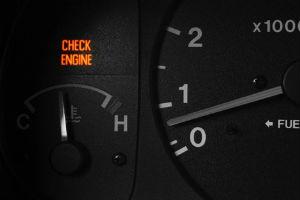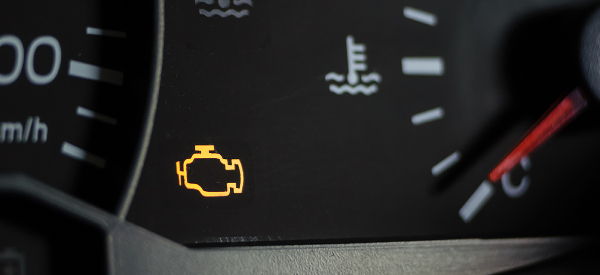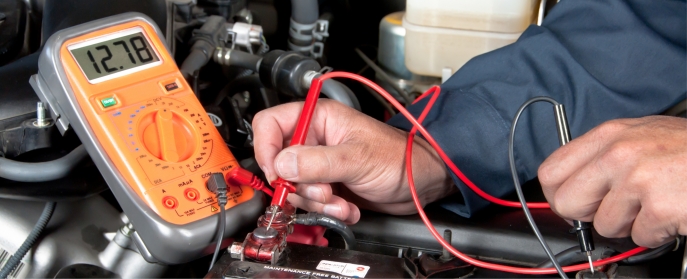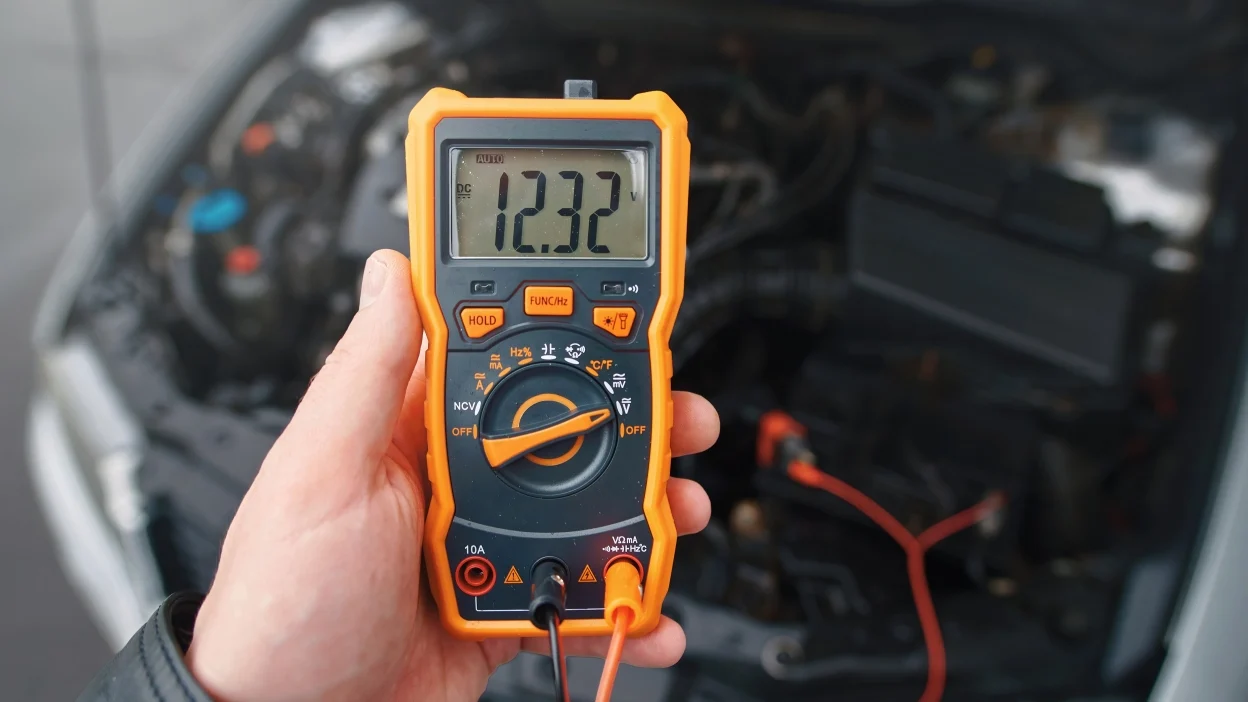Yes, a bad transmission can trigger the Check Engine Light to come on. The vehicle’s Engine Control Module (ECM) monitors transmission health through sensors.
Vehicle owners often dread the Check Engine Light, a dashboard indicator that signals various issues, ranging from minor to severe. It’s integral to a vehicle’s onboard diagnostics system and can illuminate if the transmission encounters problems. Understanding why and how your vehicle communicates through this light is essential to maintaining performance and longevity.
Whether you own a modern sports car or a sturdy work truck, recognizing the importance of the Check Engine Light is paramount. Quick action following its activation can prevent costly repairs, assuring you remain safely on the road while preserving your vehicle’s health.
Understanding The Check Engine Light
A failing transmission can certainly trigger the check engine light to illuminate. Your vehicle’s onboard diagnostics system monitors transmission performance; discrepancies or malfunctions often result in the activation of the check engine warning.
Importance Of The Check Engine Light
- Early Warning System: Alerts drivers to potential engine and transmission problems before they worsen.
- Prevents Costly Repairs: By addressing issues early, you can avoid expensive breakdowns.
- Ensures Vehicle Longevity: Regular maintenance prompted by the CEL can extend the life of your car.
- Emission Control: Helps maintain emissions within required standards by alerting to malfunctions.
Role Of The Transmission In Vehicle Operation
| Symptoms of a Bad Transmission | Possible Causes |
|---|---|
| Erratic Shifting | Worn Clutch Discs, Faulty Solenoid |
| Delayed Engagement | Low Transmission Fluid, Blocked Filter |
| Unusual Noises in Neutral | Bearing Wear, Gear Problems |
Common Transmission Issues And Symptoms
If your vehicle’s transmission is encountering problems, it might manifest in a variety of ways. From subtle hints to glaring red flags, transmission troubles should never be ignored.
A faulty transmission can lead to poor vehicle performance and even complete failure, which can be a costly repair. The complexities of modern vehicles mean that issues may not always be straightforward, but certain symptoms tend to arise that can indicate a deeper problem within the transmission system.
Recognizing Transmission Problems
Signs Of A Failing Transmission
- Slipping Gears: If your vehicle seems to slip in and out of gears without any input from you, it’s a clear sign the transmission is not functioning properly.
- Jerking Movements: Sudden jerks or jolts during gear shifts are not normal and could indicate a transmission issue.
- Delayed Engagement: Delay in vehicle movement after shifting from park to drive is another indicator of a transmission problem.
- Transmission Fluid Leaks: Puddles of red or brown fluid under your car can signify a leak, one of the most recognizable symptoms of transmission trouble.
- Unusual Noises: Whining, clunking, or buzzing sounds when the vehicle is in neutral can suggest the need for a transmission check-up.
- Burning Smell: The scent of something burning could be a result of overheating transmission fluid, and it warrants immediate attention.
- Warning Light: Yes, a check engine light can indeed come on due to transmission issues. Always pay heed to the dashboard’s distress signals.
Identifying these symptoms at an early stage is vital to ensure the longevity of your vehicle’s transmission. Regular maintenance and prompt attention to abnormal behaviors can greatly reduce the risk of severe transmission damage.
Check Engine Light Activation Reaction
A faulty transmission can indeed trigger a check engine light, alerting drivers to potential issues. This warning light may illuminate if the car’s computer detects transmission-related problems, necessitating further diagnostics and repair.
Function Of The Check Engine Light
The check engine light serves as a critical alert mechanism, informing the driver about a variety of potential issues with the vehicle’s engine and related systems. The light is part of the onboard diagnostics system (OBD-II) which constantly monitors the performance of the vehicle. When a discrepancy is detected, the OBD-II system stores a corresponding diagnostic trouble code (DTC) in the vehicle’s memory system, which can be read with a code scanner.
Primary duties of the check engine light include:
- Monitoring: It continuously checks the performance of the engine, transmission, and associated components.
- Detection: It identifies irregularities and potential malfunctions within the vehicle’s systems.
- Notification: It alerts the driver to the presence of a diagnostic trouble code and the need for a professional assessment.
Reasons For Check Engine Light Activation
There are numerous factors that can trigger the check engine light to come on. These range from simple fixes to complex mechanical problems:
| Issue | Potential Impact on Vehicle |
|---|---|
| Loose Gas Cap | Compromises fuel system pressurization, can result in fuel vapor leaks. |
| Oxygen Sensor Failure | Affects fuel efficiency and emissions performance. |
| Spark Plug/Ignition Coil Issues | Leads to engine misfire, poor acceleration, and reduced power. |
| Catalytic Converter Failure | Limits exhaust system efficiency, potentially resulting in failed emissions tests. |
| Transmission Problems | Can manifest in erratic shifting, slipping gears, and a decrease in vehicle performance. |
Specifically focusing on the transmission, the check engine light might activate due to issues such as:
- Fluid leaks or low transmission fluid levels.
- Overheating transmission.
- Faulty transmission control module.
- Malfunctioning sensors or solenoids related to the transmission system.
Diagnostic Process For Transmission Issues
A lit check engine light can signal various car issues, including a faulty transmission. It alerts you to possible transmission malfunctions, prompting a prompt diagnostic to prevent further damage.
Methods For Diagnosing Transmission Problems
- Electronic Diagnosis: This involves using specialized scanning tools to interface with your car’s computer system, accessing error codes and pinpointing problem areas.
- Fluid Inspection: Checking the transmission fluid’s level, color, and smell can provide valuable clues; a burnt odor or gritty texture are red flags.
- Road Testing: A test drive assessing performance, sounds, and shifts in gears helps isolate the problem to specific transmission components.
- Manual Inspection: A comprehensive check for any mechanical damage within accessible parts of the transmission such as bands, gears, and the torque converter.
Importance of Regular Transmission Maintenance
Importance Of Regular Transmission Maintenance
- Extends Vehicle Life: Timely maintenance leads to extended transmission life, ensuring your vehicle performs optimally for years to come.
- Avoids Costly Repairs: Catching small issues early on can save you from the expense of comprehensive repairs down the line.
- Ensures Smooth Operation: Regular maintenance ensures your gears shift smoothly, providing you with a more comfortable driving experience.
- Improves Fuel Efficiency: A well-maintained transmission operates more efficiently, which in turn can improve overall fuel economy.
Resolving Transmission Problems
When the dreaded check engine light illuminates on the dashboard, it’s a universal signal that something in your vehicle needs attention. However, not everyone realizes that transmission problems can indeed trigger the check engine light. In this crucial section of our post, the focus will be on how to tackle such an issue head-on. Diagnosing the cause behind the illuminated check engine light, especially when it concerns the transmission, is critical for maintaining your vehicle’s health and performance.
Addressing Check Engine Light With Transmission Repairs
Discovering that a transmission issue has flipped on your check engine light can be daunting. Immediate steps should be taken to ensure that the problem doesn’t escalate. Here’s a structured approach to dealing with this scenario:
- Diagnostic Scan: Use an OBD-II scanner to retrieve error codes from the vehicle’s onboard computer.
- Interpretation: Analyze the codes related to transmission issues such as solenoid failures or fluid pressure discrepancies.
- Inspection: Conduct a thorough examination of the transmission, including fluid levels and quality checks.
- Repair or Replace: Depending on the severity, opt for specialized transmission repairs or in more extreme cases, complete transmission replacement.
- Test Drive: After repairs, a test drive is essential to ensure that the issue has been correctly resolved.
Importance Of Professional Transmission Service
- Expertise: Professionals have the specific knowledge and tools to accurately diagnose and repair transmission issues.
- Quality Parts: Use of high-quality replacement parts ensures a longer lifespan and better performance of the transmission system.
- Warranty: Reputable service providers often offer warranties on their work, providing peace of mind and protection against future problems.
- Prevention: Regular transmission maintenance can preemptively address issues before they escalate into severe problems.
Engaging a trusted professional for transmission service means not only fixing the current issue but also implementing preventive measures to avoid future transmission woes. Remember, the transmission is a complex component, and skimping on professional services can result in more expensive repairs down the road.

Credit: thegarageba.com
Frequently Asked Questions
Do Transmission Problems Trigger Check Engine Light?
Yes, transmission issues can trigger the check engine light to activate.
What Are The Signs That Your Transmission Is Going Out?
Signs of a failing transmission include slipping gears, delayed engagement, fluid leaks, burning odor, grinding noises, and dashboard warning lights.
Will A Warning Light Come On For Transmission Problems?
Yes, a warning light, such as the check engine light, may illuminate if there are transmission problems.
Will My Check Engine Light Come On If I Need Transmission Fluid?
Yes, a check engine light can illuminate if your vehicle requires additional transmission fluid.





Leave a Reply